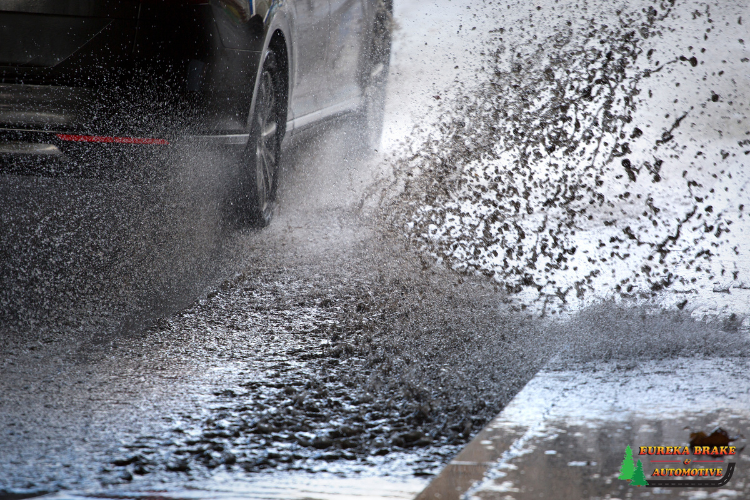Driving in wet conditions can be challenging, especially when you encounter heavy rain or standing water on the road. One of the most dangerous situations you might face is hydroplaning, which occurs when your vehicle's tires lose contact with the road surface and glide on a thin layer of water. Hydroplaning can cause a sudden loss of control, leading to skidding or even a crash. Understanding what to do if your vehicle hydroplanes and how to prevent it can keep you safe during wet weather.
When your vehicle begins to hydroplane, it’s crucial to stay calm and avoid any sudden movements. The instinct to brake hard or jerk the steering wheel can make the situation worse. Instead, gently ease off the accelerator to allow your vehicle to slow down naturally. Keep a steady grip on the steering wheel and try to steer straight. If you feel the vehicle pulling in one direction, make slight corrections to keep it on course, but avoid oversteering.
If you’re driving a vehicle with anti-lock brakes (ABS), you can gently apply the brakes while steering to regain control. For vehicles without ABS, it’s important to avoid braking until your tires regain traction with the road. Once you feel the tires reconnecting with the pavement, you can gradually brake and steer your vehicle back on track.
The best way to deal with hydroplaning is to prevent it from happening in the first place. Start by ensuring that your tires are in good condition. Worn-out tires with low tread depth are more likely to lose traction on wet roads. Regularly check your tire pressure as well, since underinflated tires can increase the risk of hydroplaning.
When driving in wet conditions, reduce your speed and avoid sudden accelerations. The faster you drive, the harder it is for your tires to disperse water, increasing the chances of hydroplaning. Stick to the middle lane, if possible, as water tends to pool in the outer lanes. Also, try to avoid driving through large puddles or areas where water is visibly standing on the road.
Maintaining a safe following distance from the vehicle in front of you is also important. This gives you more time to react if your vehicle or the vehicle ahead begins to hydroplane. If you notice heavy rain or water accumulation on the road, turn off cruise control to ensure you have full control over your vehicle’s speed.
By staying alert and taking these precautions, you can reduce the likelihood of hydroplaning and navigate wet roads with confidence. But if your vehicle does hydroplane, remember that staying calm and gently guiding your vehicle back under control is the key to avoiding an accident. At Eureka Brake & Automotive, we’re committed to your safety on the road. If you have concerns about your tires or vehicle performance in wet conditions, visit us for a comprehensive check-up to ensure you’re ready for any weather.
Schedule an appointment: Online or call us now at 707-443-2122!
*Stay connected with us on social media for updates, tips, and special offers throughout the year. We love hearing from you and are always here to help with any automotive questions or needs you might have.






